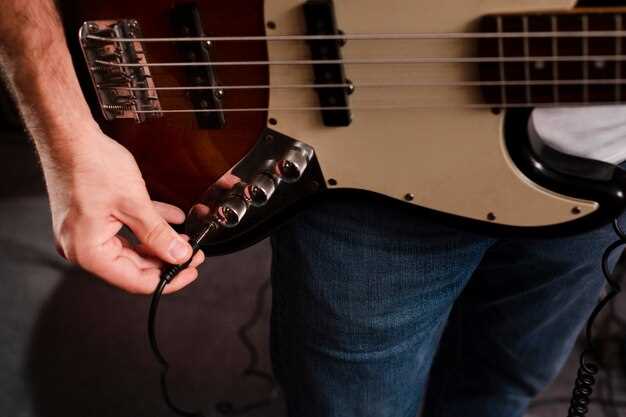
Fender rolling is a crucial procedure for car enthusiasts looking to enhance both the aesthetics and performance of their vehicles. It involves reshaping the inner lip of the fender to allow for a wider tire fitment, improved suspension travel, and the prevention of tire rubbing. Mastering this technique not only boosts the vehicle’s appearance but also contributes to improved handling and ride quality.
This article will delve into the best techniques for successful fender rolling, ensuring both functionality and the integrity of your car’s bodywork. Whether you are a seasoned gearhead or a novice, understanding the right methods and tools can make all the difference in achieving a flawless finish.
From essential tools to step-by-step guides, we will cover the nuances of fender rolling that can prevent common pitfalls and ensure a professional result. Preparation is key, and learning about the right approach can save time and resources, providing you with the confidence to tackle this modification with success.
Choosing the Right Tools for Fender Rolling

To achieve a successful fender roll, selecting the right tools is crucial. The primary tool you will need is a fender roller. This specialized tool is designed to gradually reshape the fender lip without damaging the metal. Make sure to choose a roller that offers adjustable arms to accommodate different car shapes and sizes.
Heat Gun: A heat gun is essential for softening the paint and metal of the fender. By heating the area before rolling, you can prevent cracking and tearing. Apply heat evenly across the fender lip, ensuring that the metal becomes pliable.
Jack and Jack Stands: Elevating your vehicle is necessary for accessing the fenders comfortably. A hydraulic jack along with high-quality jack stands provides stability and safety while you work. Ensure that your vehicle is secure before beginning the fender rolling process.
Wrenches and Socket Set: Removing the wheels is often a prerequisite for fender rolling. A complete set of wrenches and sockets allows for quick and easy wheel removal, providing you with unobstructed access to the fenders.
Measuring Tools: Precision is key when rolling fenders. Using measuring tools such as a tape measure or calipers can help you assess the amount of roll needed for your specific vehicle. This ensures an even roll without excessive deviation.
Protective Gear: Safety should not be overlooked. Wearing gloves, safety goggles, and a dust mask will protect you from metal shards and fumes from the heating process. It’s important to prioritize your safety while handling tools and working on your car.
By carefully choosing and utilizing these tools, you can achieve a clean and effective fender roll that enhances both the aesthetic and functional aspects of your vehicle.
Step-by-Step Guide to Proper Fender Rolling

Fender rolling is a crucial process for car enthusiasts looking to increase tire clearance and avoid rubbing issues. Follow these steps to successfully roll your fenders without damaging your vehicle.
1. Gather Tools and Materials: Before you start, collect all necessary tools. You will need a fender roller tool, a heat source (like a heat gun), protective gloves, and a wrench or socket set to remove tires if needed.
2. Prepare Your Vehicle: Park the vehicle on a flat surface and engage the parking brake. Ensure that the tires are properly inflated. Depending on the extent of the rolling, you may want to remove the wheels for better access.
3. Heat the Fender: Using the heat gun, apply heat to the fender lip for several minutes. This process helps soften the metal, making it more pliable and less likely to crack during rolling. Focus on areas where the fender will be stretched.
4. Attach the Fender Roller: Secure the fender roller to the lip of the fender. Adjust the height and angle of the roller to ensure proper contact with the fender. Make sure it is firmly in place to prevent slipping during the rolling process.
5. Begin Rolling: Slowly turn the roller handle to start the rolling process. Apply even pressure and keep a steady motion. Roll the fender in small increments to achieve the desired angle without overstressing the material.
6. Check Progress Frequently: Periodically stop to assess the progress. Make sure the fender is rolling evenly and that there are no signs of damage or cracking. Adjust the roller as needed and continue the process.
7. Finish and Inspect: Once the fenders have been shaped to desired clearance, remove the roller tool carefully. Allow the fender to cool down naturally. Inspect the work done, ensuring the finish is smooth and there are no sharp edges that could cause tire damage.
8. Reinstall Wheels: If you removed the wheels, place them back on the vehicle and torque the lug nuts to the manufacturer’s specifications. Lower the vehicle back to the ground and perform a final inspection of the fender and tire clearance.
9. Test Drive: Take the car for a short test drive to confirm that there are no rubbing issues while turning or accelerating. Pay attention to any unusual noises that may indicate contact between the tire and fender.
By following these steps, you can ensure a proper fender rolling that enhances performance and aesthetics while maintaining the integrity of your vehicle.
Common Mistakes to Avoid During Fender Rolling
One of the most significant mistakes made during fender rolling is insufficient preparation. Failing to clean the area around the fender can lead to dust and dirt getting trapped, resulting in paint damage. It’s crucial to wash the fenders and surrounding areas thoroughly before starting the process.
Another common error is not using the right tools. Some enthusiasts attempt fender rolling with makeshift tools, which can cause more harm than good. Investing in a quality fender roller designed specifically for this task ensures better results and minimizes the risk of damaging the fender.
Improper heating is also a key mistake. Many skip or inadequately perform the heating process, leading to cracking or bending of the metal. Always use a heat gun to evenly warm the fender, focusing on the area where the roll will occur. This makes the metal more pliable and reduces the chances of damage.
Neglecting to check for wheel clearance is another serious oversight. Before starting, you should ensure that the wheels have sufficient space to avoid future rubbing. Measure the clearance accurately and adjust accordingly to prevent issues down the line.
Moving too quickly through the rolling process can result in uneven shapes or stress points. Take your time, and roll slowly, applying even pressure. This approach allows the metal to roll smoothly without creasing or cracking.
Finally, ignoring safety precautions is a critical mistake. Always wear protective eyewear and gloves to protect against metal shavings and sharp edges. Taking safety seriously will help prevent injuries during the fender rolling process.


